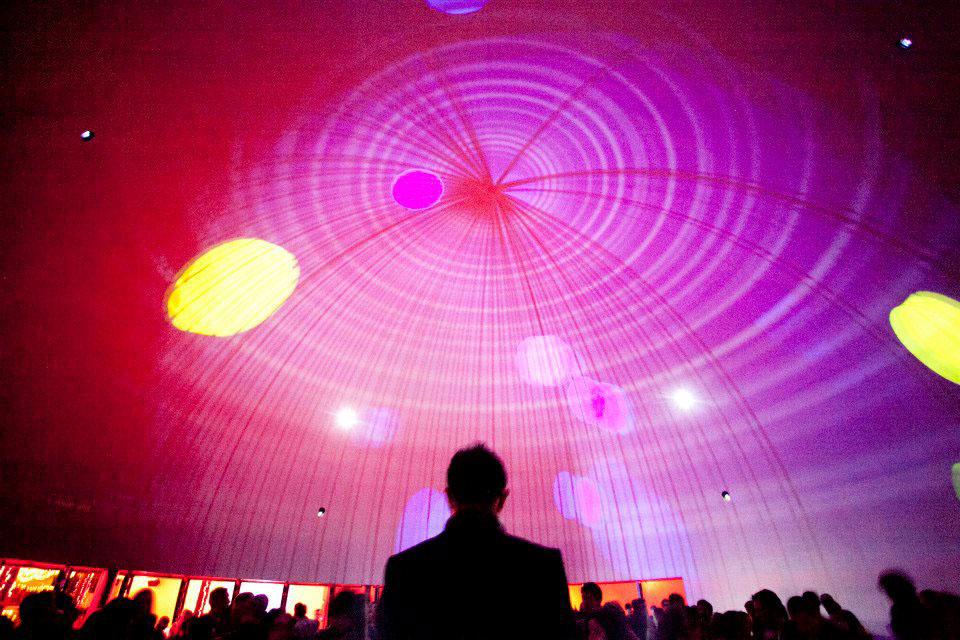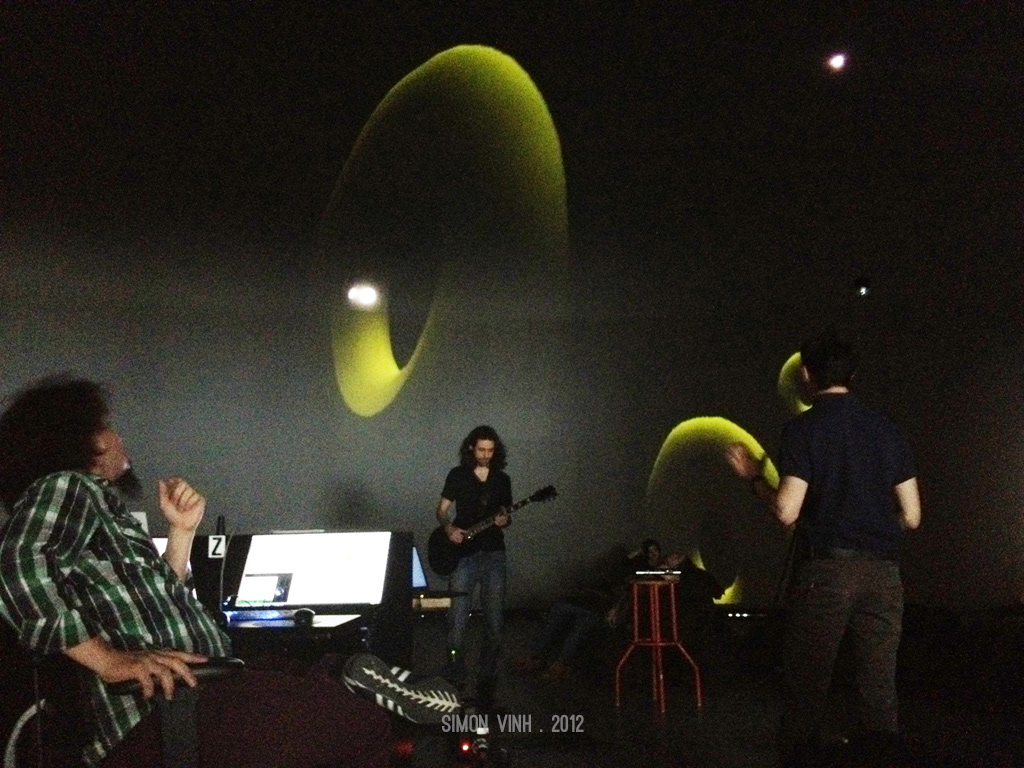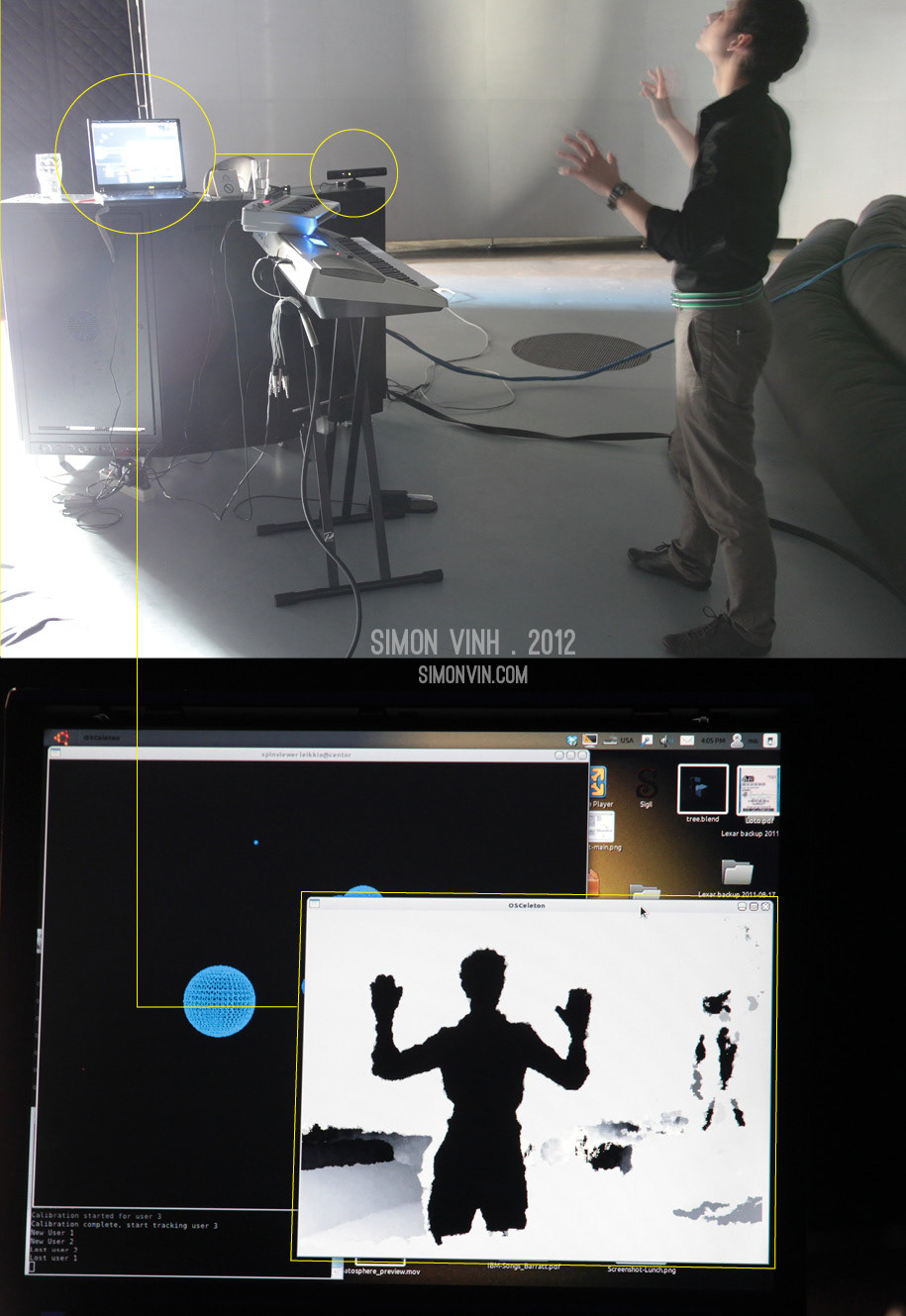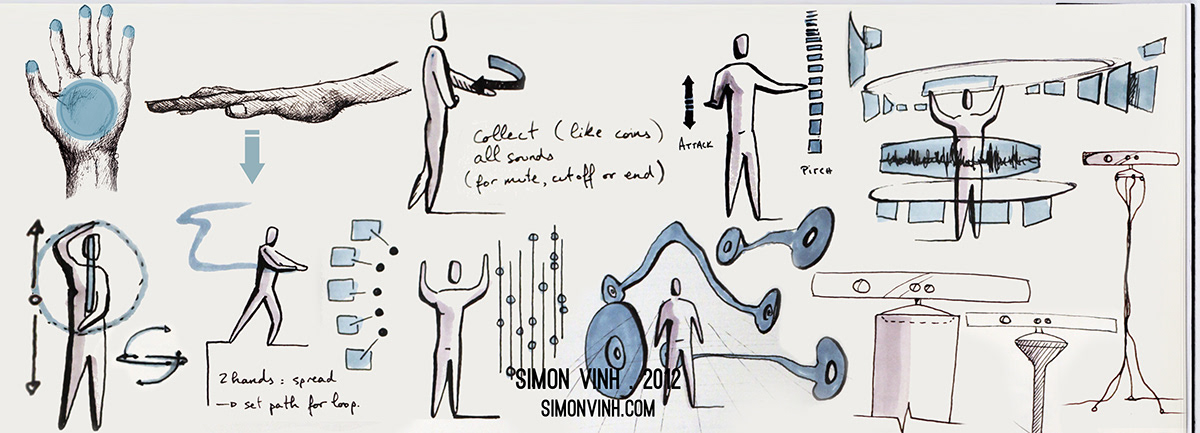

Photo: Sébastien Roy
Overview of my Industrial design Undergraduate degree final-year project.
***
Centor (2011-2012) is a gestural interface for live sound spatialisation in the immersive multimedia dome (Satosphere) of the Society for Arts and Technology in Montreal (SAT).
***
In 2011 the SAT inaugurated the Satosphere, a spherical immersive concert hall (210˚) that is equipped with 157 speakers grouped into 32 arrays/channels. The speaker system is distributed from floor to ceiling, hidden behind micro-perforated metal sheeting allowing video projection on the dome wall (in similar fashion as planetariums). Sound can be located and moved around using a three axis coordinate system (x,y,z). In the same way as cartoons or 3D animation use key frames, the current spatialisation system uses key frames in 3D to record the movements of sounds between speaker arrays.
The origins of spatialised music trace back to the mid 20th century. Composing music for multiple loudspeaker systems (ranging from stereo to 32 channels and more) has become common practice in recent years with easy access to high performing computers and sound processing software. However, from a musician and performer's perspective it remains extremely complex to perform this music. Most spatialisation interfaces available today are virtually unusable in a live context (complicated software) or their functionality is very limited (due for example to a one slider to one speaker approach to spatialisation).
The computation power of the Satosphere's audio system is exceptional, but until now has only been used for pre-rendered spatial music (using a key frames type approach). There has been interest in recent years for live sound spatialisation but development of performance interfaces appears nearly non-existent. Audio software and spatialisation interfaces are not designed for performance situations, which stops many musicians from writing such music in the first place, thereby slowing the advancement of this form of music.
Centor is a performance interface for real-time improvised spatialisation in a music performance with live sound input. Centor uses a gesture tracking system (Kinect™ + OSCeleton) and a virtual 3D environment (Spin Framework) to locate sound in acoustic space. It invited the performer to embody his music and his instrument.
Sound positioning is communicated via OSC to the hall's speaker system. Each yellow ring (see photos and video) is a sound clip coming from a live guitar signal. The guitarist dispatches sound rings into the virtual space using a loop pedal and the spatialist selects any single sound to pull it in (closer and louder) or push it away (farther and quiet) in order to create an immersive audio mix. The volume of each loop is relative to the perceived distance (ex: far and high up = low volume originating from the ceiling speakers).
One of the complexities of Centor is the third axis of sound positioning. Until recently speaker systems we're mostly built in a circular configuration with a single ring of speakers allowing graphic interfaces and music controllers to employ a planar (2D) approach to interaction. Using a 3D camera seamlessly integrates all axes into the interaction for what could be called spatial orchestration. Sounds can be moved in any direction and localization rendering is continuous in real-time, even while a sound is selected and in motion.
The Centor performance interface meshes the experience of the musicians and spectators into a truly immersive musical event. The audience being closely seated around the performers brought the artists and spectators' experiences together. Spectators could see, hear and understand the spatialisation process thereby enhancing their musical experience.
( --- update: October 2012 --- ) Music is evolving and composers have defended for many years that the manipulation of sound-space is to electronic music what pitch and timbre are to traditional acoustic music: it's identity. The creation of musical interfaces for controlling sound in acoustic space and for the performance of spatial music beyond the mouse and keyboard must be addressed. Spherical concerts halls are being built and are drawing more and more composers to spatialised music. Centor is the result of an undergraduate research collaboration between the University of Montreal and the SAT. Further research is ongoing in the University of Montreal graduate program in Design and Complexity, in partnership with the SAT.
Thank you for reading!
***
Please contact me for further information









